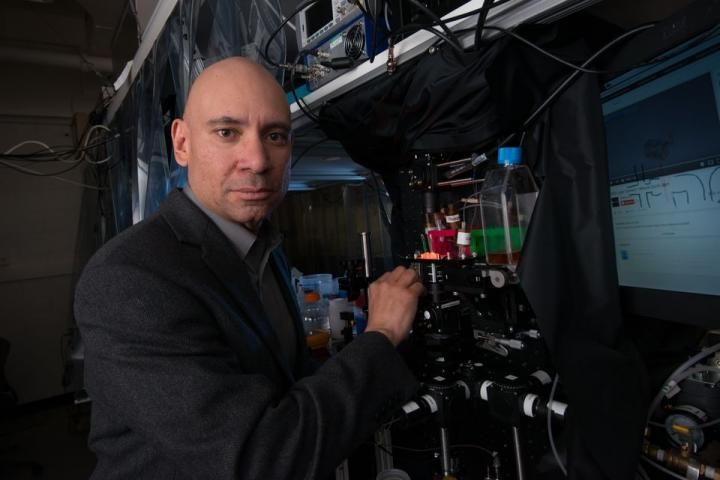Dec 4 2017
Boulder researchers are undertaking a new project to examine the progression of neurodegenerative diseases like Alzheimer's by employing a new laser method to measure neurons firing deep inside animal brains.
 A team led Ralph Jimenez is developing new ways to image brain activity using lasers. Credit: NIST
A team led Ralph Jimenez is developing new ways to image brain activity using lasers. Credit: NIST
The researchers hope that the study could eventually lead to earlier diagnosis and improved treatment options.
The research team, headed by Ralph Jimenez of JILA - a joint institute of the University of Colorado Boulder and the National Institute for Standards and Technology (NIST), aims to develop biological labeling techniques and quantum light sources for measuring neural processes in real time.
A $6.5 million competitive grant from the NIST Innovations in Measurement Science program was funded to support this effort. Other project researchers include Thomas Gerrits and Marty Stevens of NIST's Boulder laboratories and Marcus Cicerone at the NIST laboratories in Gaithersburg, Maryland. On top of this, the effort will also involve CU Boulder graduate students and postdoctoral students from both the chemistry and biochemistry and the physics departments, said Jimenez.
In order to make progress in this field, scientists need to be able watch neurons when they are performing tasks like learning, memory and perception, this new capability could revolutionize the ability of scientists to learn more about conditions like Alzheimer's and Parkinson's disease, the aim is to enable diagnosis of neurodegeneration before it becomes fatal.
Ralph Jimenez, associate adjoint professor in CU Boulder's Department of Chemistry and Biochemistry.
The new laser microscopy technique, which researchers hope can be transferred from mouse to human research, involves shooting packets of light, or pairs of photons, deep into brain tissue. Then, the photons will be absorbed by mouse neurons that have been engineered genetically to emit a different color of light during the interaction.
Then, the emitted light, which appears from a focused laser spot microscopic in size, will be collected and scanned to produce a 3D image of the inner workings of the brain. It will be possible to produce "movies" of the process employing these packets of light, said Jimenez.
According to Jimenez, researchers who currently use laser to image neurons in a mouse brain are only capable of penetrating a millimeter or so into the brain tissue before the high-power laser light is spread by tissues, which is a big problem. The new laser technique will enable deeper penetration without damaging or heating neurons. Eventually, researchers will be able to access brain areas of mammals where learning and memory take place.
If we can see how Alzheimer's happens in real time at the neuron level, for example, scientists can begin thinking about designing drugs or other interventions, we are looking at this like a 'moonshot' project, with sufficient funding and momentum, dramatic advances can happen quickly.
Ralph Jimenez, associate adjoint professor in CU Boulder's Department of Chemistry and Biochemistry.